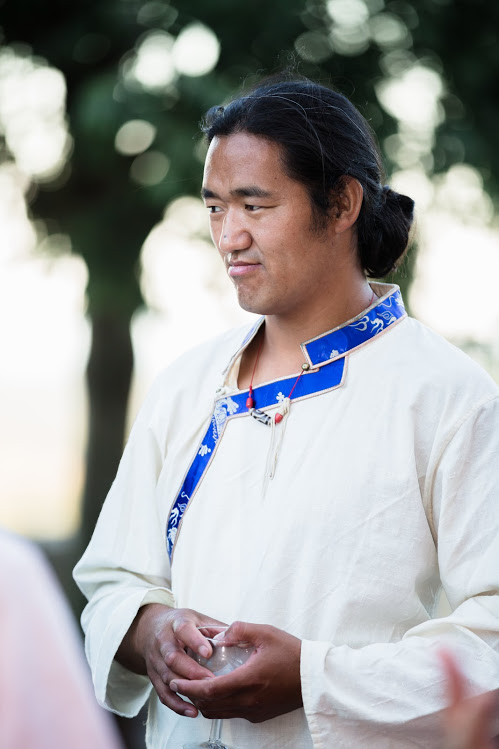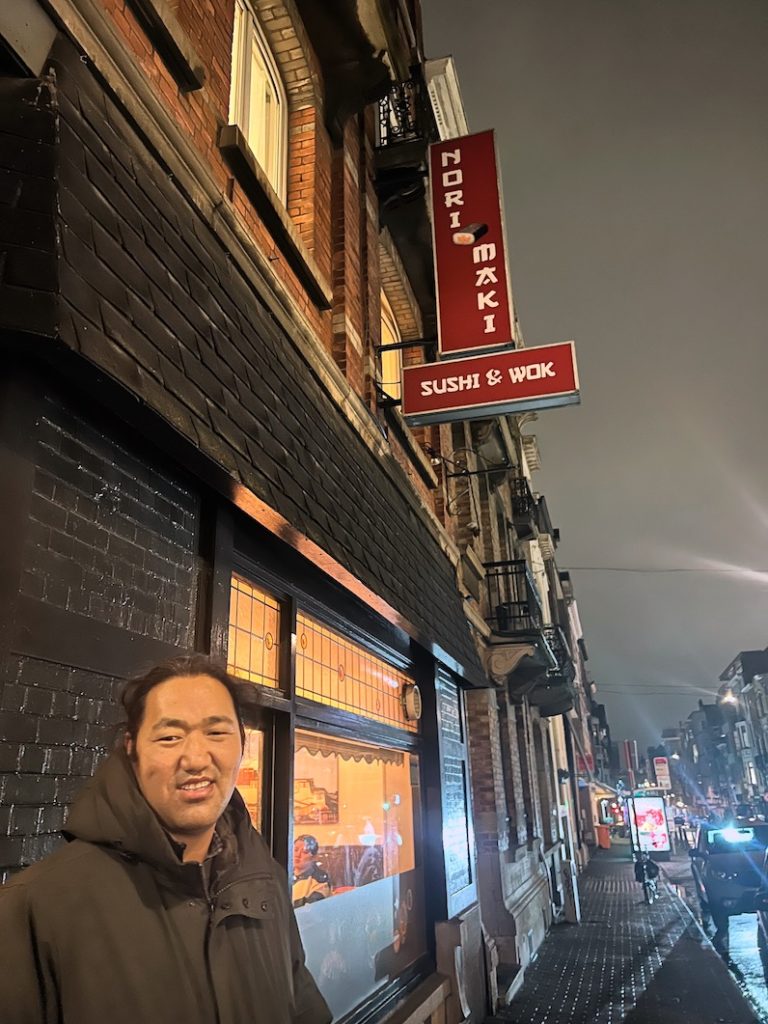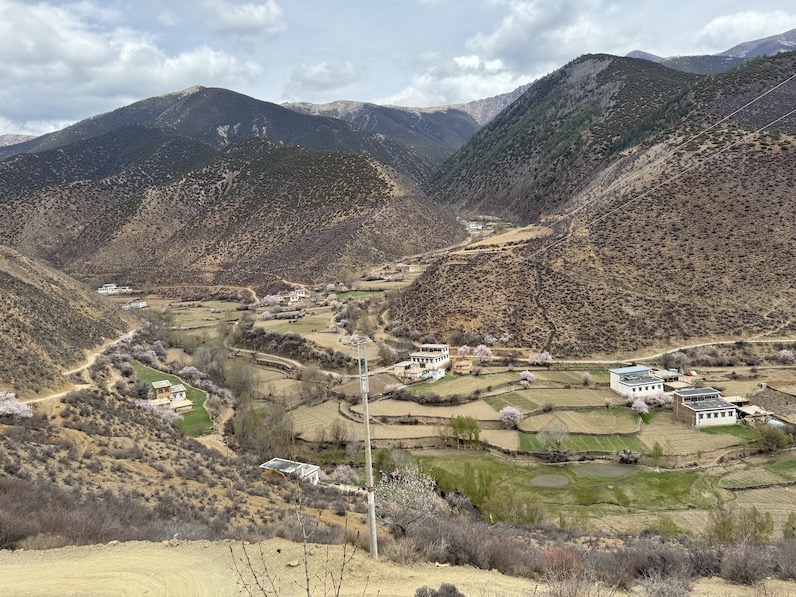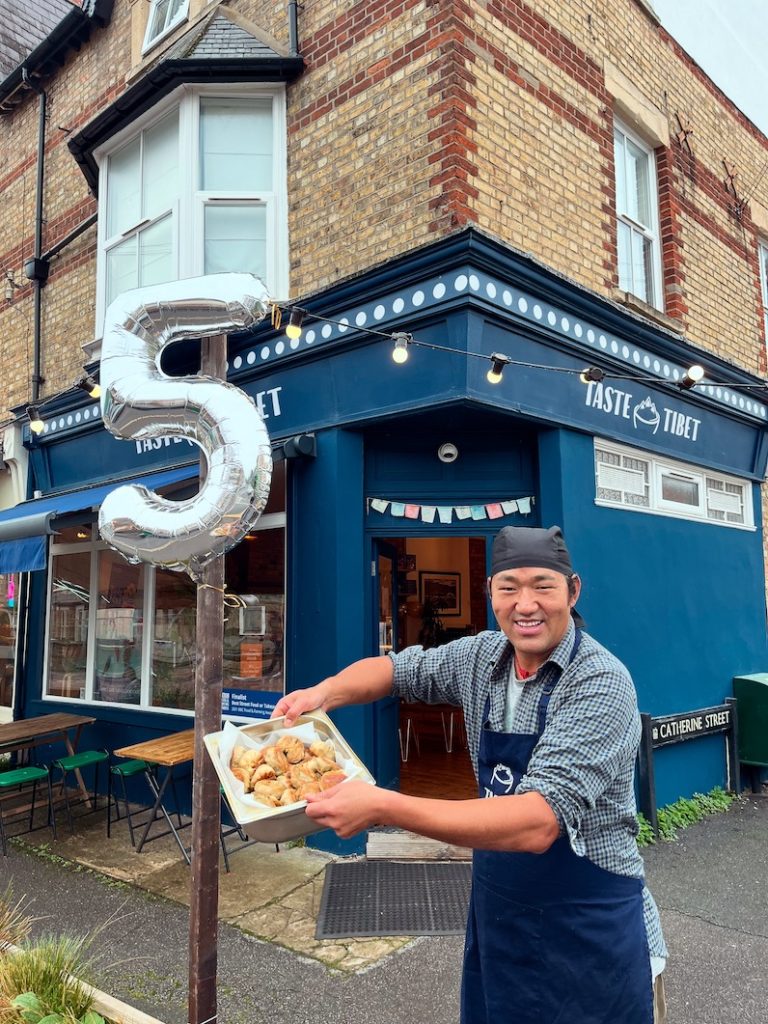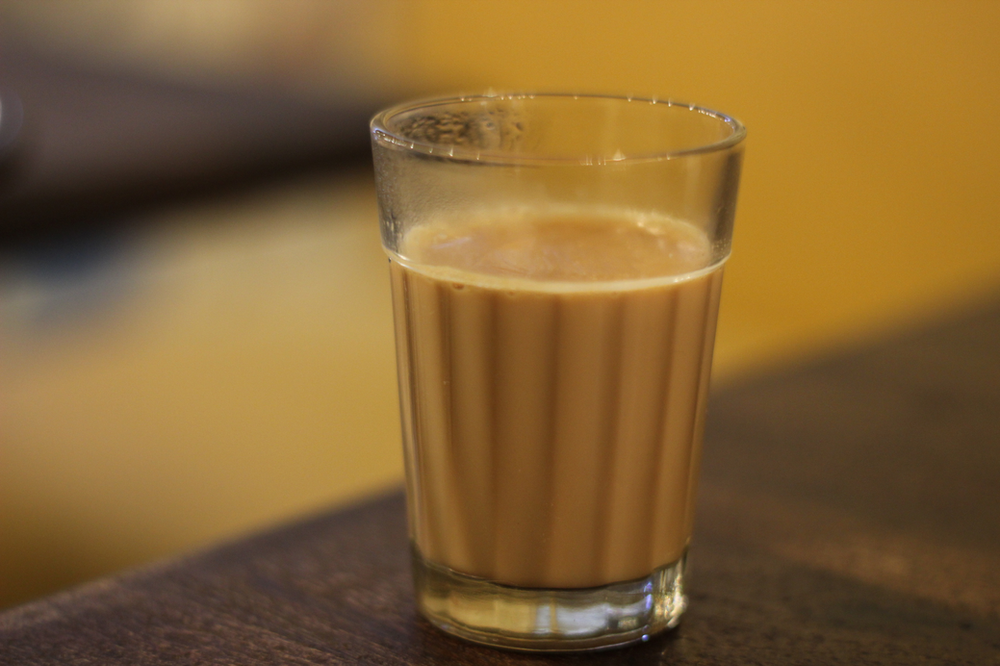
Those who have been lucky enough to visit Tibet have lots of questions of our chai tea at the Taste Tibet stall. Tibetan tea gets a bad rep.
Tibet is most famous (notorious?) for its butter tea. This is made with bitter, black tea, churned with yak butter and sometimes salt. It is consumed several times a day, every day, by most Tibetan people. Butter tea is said to have considerable warming properties, as well as a high calorie count, both useful qualities at high altitude. Yak butter also helps to prevent and soothe chapped lips, a matter of course on Tibet’s windy, exposed steppes. I remember well smoothing yak butter over cracked skin back in the day.
The unlucky visitor to Tibet does not experience butter tea at its finest. Refrigerators have yet to reach the more remote parts of the country, and, poorly stored, butter turns rancid. This gives the tea a unique pungent taste, an acquired one to say the least.
But fresh yak butter tea is a different drink entirely. Our littlest was two when she was first introduced to it, and given half the chance she could keep pace with the adults, even welcoming into her cup large chunks of sour-tasting yak cheese for extra flavour.
There are no yaks in Oxford, so the tea we bring to our stall is a different drink entirely. No butter and no salt (no rehydration needed in these damp climes), but instead a secret blend of crushed whole spices, sugar, and fresh ginger. This tea is also very popular in Tibet, particularly in Lhasa, Tibet’s capital. Some people believe that it was British troops who first introduced it to Tibet in the early 20th century. If not, it was almost certainly a custom that travelled from neighbouring Nepal or India.
Today, Tibetan chai tea is as loved in Lhasa as coffee is in the west. Here in the UK, it is the perfect fix for a cold British winter, or, in summer, a deliciously refreshing alternative to your normal caffeine hit.
Nothing to fear here, everything to gain.
#tibetan #taste #tibet #tea #chai

